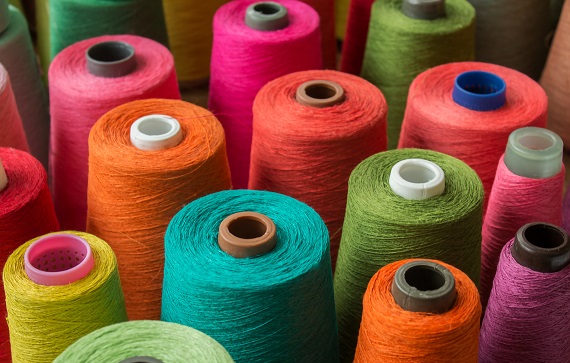Adviser to Prime Minister on Commerce Abdul Razak Dawood on Monday said that Pakistan’s textile sector’s exports are set to swell to a record high and will gain an edge over South Asian.
In an interview to an international news agency he said textile exports are poised to increase 40 per cent from a year earlier to a record $21 billion in the 12 months ending June.
He predicted that figure would expand to $26 billion in the next fiscal year, surpassing the nation’s total exports last year.
The textiles industry — which supplies everything from denim jeans to towels for buyers in the US and Europe — is one of the country’s few economic bright spots.
Textiles amount to about 60 per cent of Pakistan’s total exports and the nation allowed its factories to open ahead of India and Bangladesh when the pandemic first emerged in 2020, drawing orders from global brands including Target Corp. and Hanesbrands Inc.
“A lot of orders actually were shifted from Bangladesh and India to Pakistan” during the pandemic, said Dawood. “The other good thing that’s happening is we are now becoming competitive with Bangladesh.
“Three, four years ago, Bangladesh was really beating us. The government also plans to announce a proposal next month that will likely provide incentives for exports to new markets such as Africa, South America and Central Asia”, Dawood said.
The nation is doubling down to boost textile exports through measures including tax breaks, cheap loans and supplying electricity at rates that are comparable with rivals in South Asia. A 60% decline in the local currency against the dollar since 2018 has also helped.
“Pakistan’s exports have become competitive over the past few years,” said Ahfaz Mustafa, chief executive officer at Ismail Iqbal Securities Pvt.
“There is a fixed energy tariff regime that keeps in mind regional prices, the government is much quicker to refund the money it owes exporters and there has been a giant currency devaluation.” The South Asian nation is looking to increase its exports to get out of its regular boom-bust economic cycles that have led it to seek an International Monetary Fund program 13 times since the late 1980s. It’s also trying to revive a $6 billion bailout program to meet financing requirements amid a record trade deficit.
There is “very little” that can be done about the nation’s record-high imports, which are driven mainly by purchases of petroleum products such as gasoline, gas and vaccines that are essentials.
Pakistan will be “under pressure” if oil hits $100 a barrel, Dawood said. He does expect food-related imports to decline this year following a better domestic crop harvest.
Trade has already grown to $120 million in six months of the current fiscal year from $14 million in the entire preceding year, he said.

























There is a limit to how much of textile you can export. Pakistan must spread the risk and support other export industries. Furniture, meat, IT and spareparts are the sectors that need a 50% growth in the enxt couple of years.
Is there a relevant limit? Textiles are one of the biggest exported items in the world. This industry is worth hundreds of billions, and continuously growing. Further, textile industry is shifting from higher income countries to the next tier. This means that while there is a theoretical limit, it is not particularly relevant to Pakistan. Textiles, unlike IT, generates many jobs. This is why Bangladesh is overtaking india on almost every indicator, and why indias growth is heavily concentrated only in the top 10%. India’s focus on services mints billionaires, Bangladesh’s focus on textile crushes poverty.
Good Days Ahead